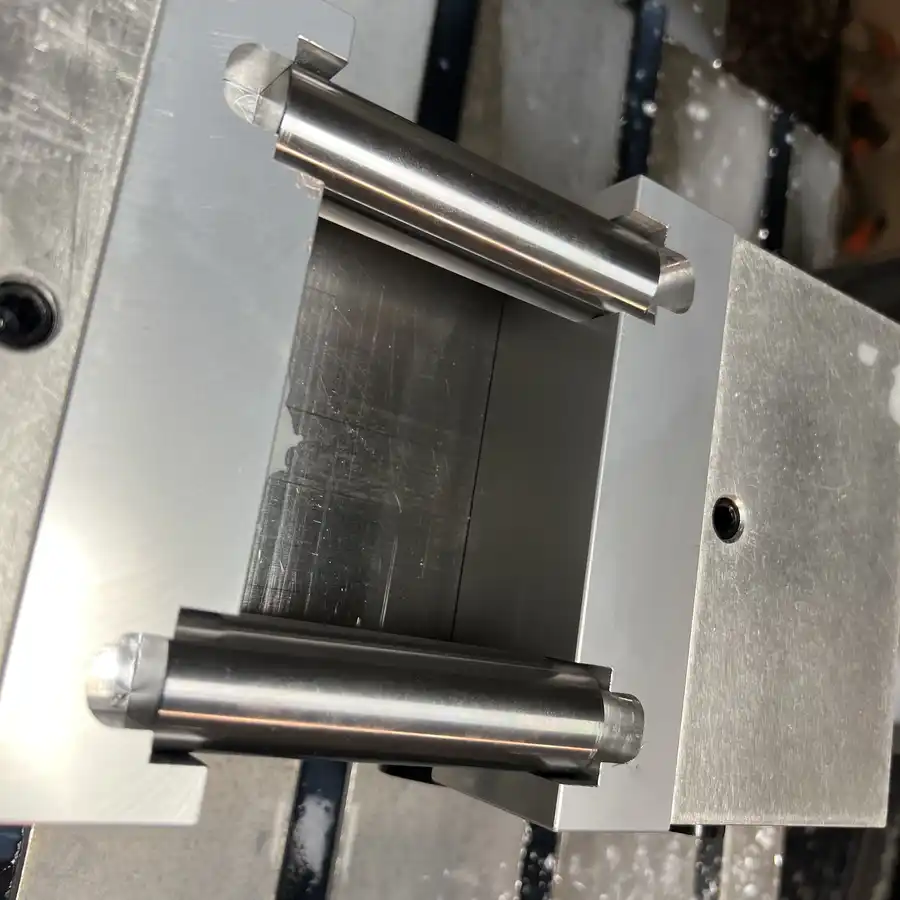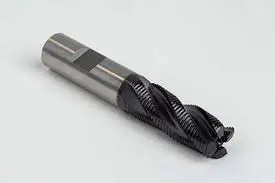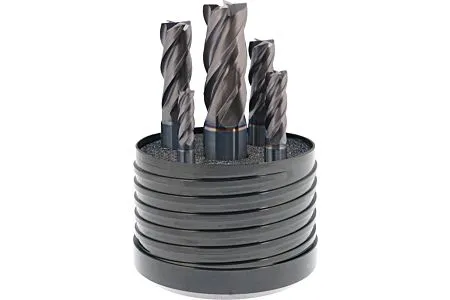In this article, we will look into the skills of achieving heavy cuts on CNC machines. In CNC machinery machining the part is achieved by cutting passes, so if you use the correct depth of cut Achieving the proper amount can drastically reduce turnaround times and enhance efficiency. So end of this article you will have a good understanding of removing a lot of material with deep-heavy cutting passes.

The Importance of Heavy Cuts in CNC
Heavy cuts are crucial in both CNC and manual machining. The success of a CNC job is often measured by the material removal rate. To optimize this rate, mastering the technique of heavy cuts is essential. This involves understanding the depth of cuts, which can vary from a few millimeters to as much as 25mm.
When examining endmills and other milling cutters, they are designed to cut deeper passes (Depth of Cut – DOC). However, endmills can be fragile during aggressive cutting. Plunging too deep can cause the passes to overheat and become more stressful. To prevent tool breakage, it’s vital to adjust feeds and speeds to maximize the DOC. We’ll delve into how to achieve this later.
Several methods can be employed to successfully achieve high depths of cuts. This is naturally linked to the part-holding method, feed and speed calculations, and machine rigidity. By harmonizing these three criteria, even the hardest metals can be cut smoothly with a high depth of cut. Remember, this approach allows for the removal of a significant amount of material in a short span.
Benefits of Cutting Heavy Passes
Maximize material removal rate
As previously mentioned, success in CNC machining is marked by the ability to remove more material in less time. With heavy passes of great depth, the material removal rate is maximized, enabling quicker and easier completion of parts.
Reduce machine working load and maximize cutter usage
Another advantage of heavy passes is reduced machine workload. This is because you utilize the previously unused length of your endmill. Typically, endmills come with a 20mm-25mm cutting length, but this capacity is often not used unless you plunge to full depth. By not plunging sufficiently, you leave the table with your material removal potential.
Machining with heavy passes efficient as High-speed machining
Heavy passes vs. High-speed machining comes into play. While it allows for full depth of cut, high-speed machining isn’t feasible for everyone due to the need for a fast CNC controller with advanced DNC capabilities, such as the “look ahead” function. For instance, I’ve worked with machines that navigated high-speed toolpath corners at a sluggish feed rate, leading to accelerated tool wear. Heavy passes with a high DOC can address this issue.
Furthermore, heavy passes can significantly reduce overall costs. This translates to increased profits and satisfied customers, as you’ll use fewer endmill cutters, your expenses will go down.
Challenges and Considerations
Cutting heavy passes, like any other technique, comes with its set of challenges. Due to the risks associated with CNC machining, caution is important. The risks amplify with heavier DOC passes.
For example, the intense stress from deep heavy passes can dislodge parts from jigs and vises, posing threats to the machine, its parts, and the operator.
Machine stability and rigidity are important for heavy cuts. Stable and rigid machines facilitate heavy cuts. Without such machines, cutters can’t withstand the cutting stress, potentially causing more harm than good. If your machine isn’t up to par, it’s best to avoid heavy cutting tasks and instead match the cutting process with a machine capable of handling it.
Tool selection is also crucial. Some tools are specifically designed to handle high DOCs without excessive stress. While some tools can mitigate cutting stress, others can’t. It’s acceptable to endure some cutting stress, provided your CNC machine isn’t fragile.

Best Practices for Cutting Heavy Passes
Choice carbide cutters and Endmills instead of HSS ones.
For heavy cutting, opt for carbide endmills over HSS endmills. The cutting can easily overheat due to the friction and heat generated from removing large amounts of material. In contrast, carbide endmills are crafted to withstand the high temperatures that arise during material removal.
Take extra care of vises, clamps, etc.
Ensuring that all tools are securely attached to the CNC machine is vital. From experience, I know that high DOC cuts can easily displace your workpiece. Hence, a rigid part-holding system is essential to counteract the cutting stress, ensuring the end mill cuts effectively.
Customize the cutting parameters for heavy cuts.
Choosing the right cutting parameters for heavy passes is also crucial. For instance, high cutting speeds aren’t recommended for heavy cuts due to the heat generated. It’s advisable to reduce manufacturer-recommended values by approximately 30%. The cutting endmill should penetrate the material smoothly without chattering.

Try to avoid using liquid-based coolants and prefer air.
Understanding coolants and lubricants is another key aspect. While it might seem intuitive to use liquid coolants for heavy cuts, air cooling is often more effective. Liquid coolants can make the cutting surface slippery, preventing the tool’s teeth from cutting efficiently, and leading to chattering and tool damage. Air cooling effectively dissipates heat, ensuring smooth cuts. For materials like aluminum and stainless steel, coolants can be used if reducing RPM and using air prove ineffective.
Safety Measures for Cutting Heavy Passes
Always ensure the protective doors of CNC machines are closed during operations, regardless of the intensity of the cut. These doors safeguard against tool breakages and other hazards.
Monitoring for vibrations and anomalies is essential. Heavy tasks involve moving large amounts of material, which can wear out tools. However, this wear is gradual. It’s a result of removing vast amounts of material, not a flaw in the machining process. Cutting tools have a finite lifespan, and heavy tasks can expedite their wear. However, this isn’t necessarily negative, as it indicates efficient tool usage.
FQA for cutting heavy passes
Why are heavy cuts essential in CNC machining?
Heavy cuts optimize the material removal rate in CNC projects. They help understand varying cut depths, from a few millimeters to 25mm. Mastering this technique enhances efficiency and reduces turnaround times.What benefits do heavy passes offer in CNC machining?
Heavy passes maximize material removal, ensuring efficient part completion. They reduce machine workload and optimize cutter usage. Additionally, they’re a cost-effective alternative to high-speed machining.What challenges arise from cutting heavy passes?
Deep heavy passes can displace parts, posing threats. Ensuring machine stability and rigidity is crucial. Tool selection, designed for high DOCs, mitigates excessive stress and potential damage.How is safety maintained during heavy CNC cuts?
Always keep CNC machine protective doors closed. Monitor for vibrations and anomalies. Regular checks ensure tool longevity and prevent sudden breakages, ensuring a safe environment.Should I decrease the feed rate if the cut is interrupted?
Yes, decreasing the feed rate during interrupted cuts can prevent tool breakage and reduce stress on the machine. However if cutter gets broken after reasonable time of working brakage can be expected, redusing feedrate can extend the job completion time and increase cost of the job.Summary
Using heavy passes and achieving high DOC increases efficiency so much. To achieve this you need to consider safety, cutting parameters, and coolant in a different way than usual.

